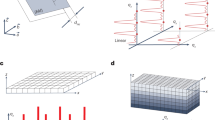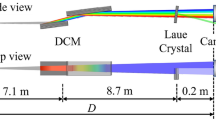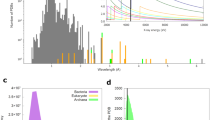Abstract
IN a recent communication1 I reported that good type I diamonds gave bad divergent-beam photographs, the deficiency (absorption) lines being scarcely, if at all, visible against a foggy background, whereas type II diamonds gave excellent divergent-beam photographs. I suggested that this could be explained if the type I diamonds were 'ideal' and type II diamonds 'mosaic' in structure. The poor photographs would be an indication of large primary extinction.
This is a preview of subscription content, access via your institution
Access options
Subscribe to this journal
Receive 51 print issues and online access
$199.00 per year
only $3.90 per issue
Buy this article
- Purchase on Springer Link
- Instant access to full article PDF
Prices may be subject to local taxes which are calculated during checkout
Similar content being viewed by others
References
Lonsdale, NATURE, 153, 22 (1944).
Rutherford and Andrade, Phil. Mag., 28, 263 (1914).
Robinson, Proc. Roy. Soc., A, 142, 422 (1933).
Robinson, Proc. Roy. Soc., A, 147, 467 (1934).
Wyckoff and Corey, Z. Krist., 89, 462 (1934).
Brill, Grimm, Hermann and Peters, Ann. Phys., 34, 419 (1939).
Author information
Authors and Affiliations
Rights and permissions
About this article
Cite this article
LONSDALE, K. X-Ray Divergent-Beam Photography as a Test of Crystal Perfection. Nature 153, 433–434 (1944). https://doi.org/10.1038/153433a0
Issue Date:
DOI: https://doi.org/10.1038/153433a0
This article is cited by
-
Are there Four Possible Diamond Structures?
Nature (1945)
Comments
By submitting a comment you agree to abide by our Terms and Community Guidelines. If you find something abusive or that does not comply with our terms or guidelines please flag it as inappropriate.



